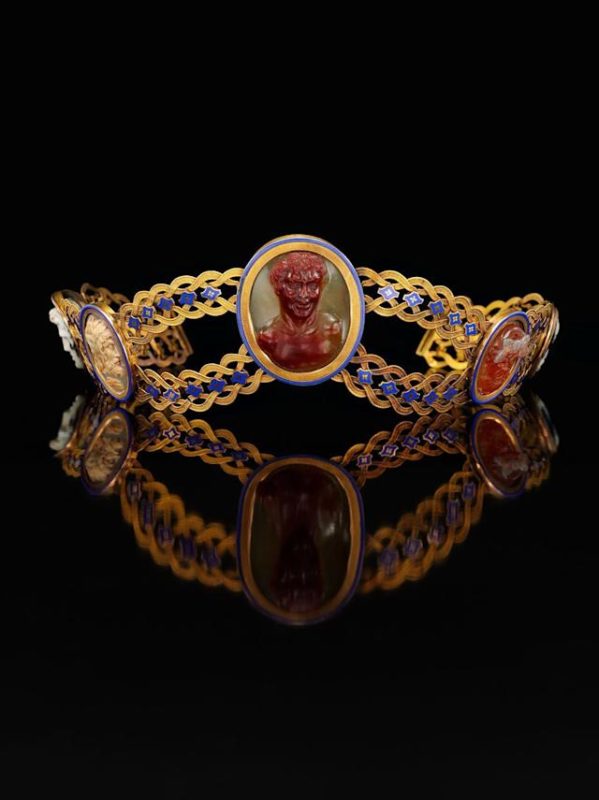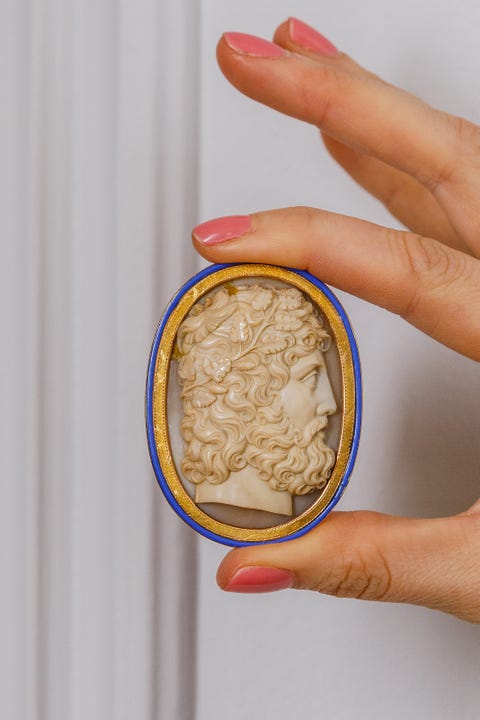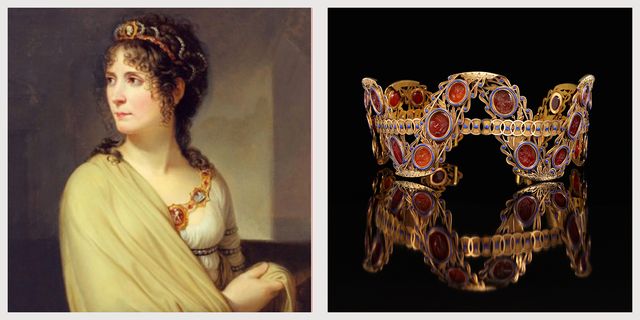Empress Joséphine Bonaparte’s Tiaras Are About to Hit the Auction Block-
These royal tiaras and jewels reflect the Empress’s obsession with French luxury and craftsmanship.
The following written content by Jill Newman

Empress Joséphine de Beauharnais, wife of French Emperor Napoléon Bonaparte, understood the power of jewelry and fashion to define her public image. Her ill-fated predecessors didn’t fare as well, so when she and Napoléon came into power, they sought to enhance their regal style and legitimize their new government by resurrecting historical and cultural references to ancient Rome. That resulted in tiaras, jewels, and fashion in a Neoclassical style, a trend that swept through France under Bonaparte’s regime. Two historic tiaras that reflect this Empire style (each with matching jewels) will be offered at Sotheby’s London sale on December 7.

These tiaras are symbolic of France’s post-Revolution shift towards classical simplicity, and outward rejection of the previous century’s taste for opulent embellishment. Made in Paris in 1808, the tiaras and accompanying parures, which by tradition are believed to have belonged to Empress Joséphine, reflect the finest early 19th century French craftsmanship. They are set with cameos engraved with classical heads, some thought to be ancient, which were believed to endow the wearer with the qualities they depicted such as heroism, faithfulness, and love. The jewels were owned by a private UK collection for more than 150 years, and combined they are expected to fetch $410,000 to $690,000.
Napoléon and Joséphine were widely known for their lavish taste and appetite for luxury, and their commissions helped revive the struggling post-war French luxury workshops and spearheaded new trends. “By being the first to incorporate these cameos and intaglios into her dress, wearing them side by side with pearls and diamonds, she created an entire new fashion that swept Paris and the world, based on Neoclassical forms,” explains Kristian Spofforth, Head of Sotheby’s Jewels department in London. “The jewels offered here demonstrate the finest delicate work by the finest French workshops, and, today, there are hardly any comparable pieces in the world.” Most neo-classical designs were taken apart and remodeled once fashions shifted, which make these pieces an especially great discovery. Read more from T & C.





